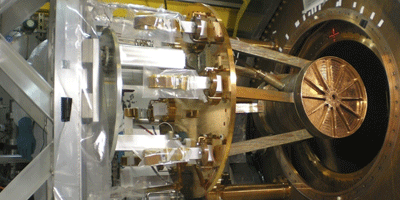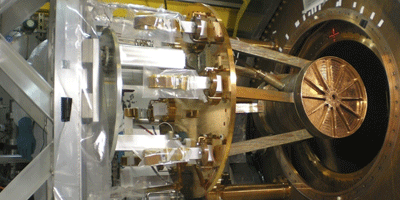Looking for No Neutrinos
Physicists are confounded by neutrinos. Why are they so light, and why do they have the masses they do? Ironically, one approach is to study cases where neutrinos are on holiday, as in a rare reaction called neutrinoless double-beta decay. This only occurs if neutrinos are their own antiparticles (so-called Majorana fermions) and confirming this would help peg the mass values of various neutrino states. Several experiments to do this are underway, and as reported in Physical Review Letters, the most recent experimental search for neutrinoless beta decay in an isotope of xenon sees no signs of the reaction, but sets the most stringent limits to date on the likelihood it can occur.
Double-beta decay, where two beta particles (electrons) and two antineutrinos are emitted, is allowed only in certain isotopes—albeit with a probability of less than once every years. If neutrinos are Majorana fermions, double-beta decay could also occur in a virtual process, with the nucleus emitting an antineutrino and absorbing a neutrino—a neutrinoless decay.
Researchers at the Enriched Xenon Observatory (EXO), housed at the Waste Isolation Pilot Plant near Carlsbad, New Mexico, are looking for the rare neutrinoless decay in kg of liquid xenon enriched to more than xenon- , an isotope in which double-beta decay is allowed. The EXO detector measures the energy spectra of the two electrons emitted in the nuclear decay, which differ if the electrons are accompanied by two neutrinos or none.
Based on data collected between September 2011 and April 2012, EXO sees no evidence of neutrinoless double-beta decay, and concludes that the half-life for the process in xenon- must be greater than years. The half-life sets a new upper limit on the Majorana neutrino mass and may cast doubt on an earlier claim that neutrinoless double-beta decay was observed in germanium- . – Jessica Thomas





